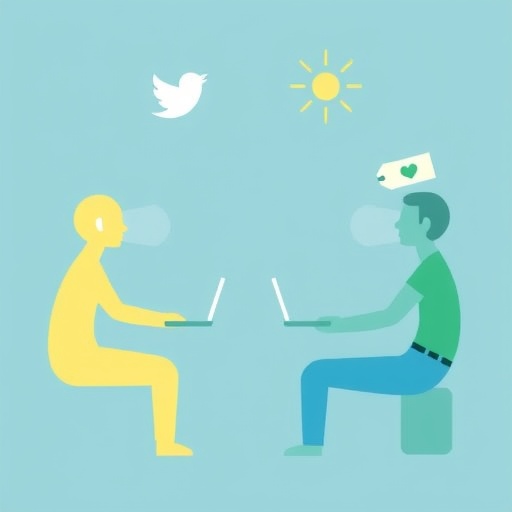Can sex help start a relationship?
A budding relationship or just a one-night stand? The difference may not be immediately obvious, least of all to those directly involved. However, sex helps initiate romantic relationships between potential partners, a new study finds.
A team of psychologists from the Israeli-based Interdisciplinary Center Herzliya and the University of Rochester’s Department of Clinical and Social Sciences in Psychology conclude that sexual desire may play a major role not only in attracting potential partners to each other, but also in encouraging the formation of an attachment between them.
“Sex may set the stage for deepening the emotional connection between strangers,” says the study’s lead author Gurit Birnbaum, a social psychologist and associate professor of psychology at the IDC Herzliya. “This holds true for both men and women. Sex motivates human beings to connect, regardless of gender.”
The study was limited to heterosexual relationships. According to Birnbaum, some believe that men are more likely than women to initiate relationships when sexually aroused, but when one focuses on more subtle relationship-initiating strategies, such as providing help, this pattern does not hold true: in fact, both men and women try to connect with potential partners when sexually aroused.
In four interrelated studies, participants were introduced to a new acquaintance of the opposite sex in a face-to-face encounter. The researchers demonstrate that sexual desire triggers behaviors that can promote emotional bonding during these encounters.
“Although sexual urges and emotional attachments are distinct feelings, evolutionary and social processes likely have rendered humans particularly prone to becoming romantically attached to partners to whom they are sexually attracted,” says co-author Harry Reis, a professor of psychology and Dean’s Professor in Arts, Sciences & Engineering at the University of Rochester.
In the first study, the researchers looked at whether sexual desire for a new acquaintance would be associated with non-verbal cues signaling relationship interest. These so-called immediacy behaviors are displayed in the synchronization of movements, close physical proximity, and frequent eye contact with a study insider who worked with the scientists. The study participants, all of whom identified as single and heterosexual, were recruited at a university in central Israel.
Study 1 included 36 women and 22 men who lip-synched to pre-recorded music with an attractive, opposite-sex study insider. Afterwards, participants rated their desire for the insider, whom they believed to be another participant. The scientists found that the greater the participant’s desire for the insider, the greater their immediacy behaviors towards, and synchronization with, the insider.
Study 2 replicated the finding with 38 women and 42 men who were asked to slow dance with an attractive, opposite-sex insider, whom they believed to be a study participant. Again, the researchers found a direct association between synchronization of body movement and desire for the insider.
Study 3 included 42 women and 42 men and established a causal connection between activating the sexual behavior system and behaviors that help initiate relationships. In order to activate the sexual system, the researchers used a subliminal priming technique in which they flashed an erotic, non-pornographic image for 30 milliseconds on a screen, which participants were not aware of seeing. Next, participants interacted with a second study participant–essentially a potential partner–discussing interpersonal dilemmas while being videotaped. Afterwards judges rated the participants’ behaviors that conveyed responsiveness and caring. The scientists found the activation of the sexual system also resulted in behaviors that suggested caring about a potential partner’s well-being–an established signal for interest in a relationship.
Study 4 included 50 women and 50 men. Half the group watched an erotic, non-pornographic video scene from the movie The Boy Next Door. The other half watched a neutral video of rainforests in South America. Next, study participants were assigned an attractive opposite-sex insider and told to complete a verbal reasoning task. The insider pretended to get stuck on the third question and asked the participant for help. The researchers found that those participants who had watched the erotic movie scene were quicker to help, invested more time, and were perceived as more helpful, than the neutral video control group.
What then could explain the role of sex in fostering partnerships? Human sexual behavior evolved to ensure reproduction. As such, sex and producing offspring don’t depend on forming an attachment between partners. However, the prolonged helplessness of human children promoted the development of mechanisms that keep sexual partners bonded to each other so that they can jointly care for their offspring, says Birnbaum, whose collaboration with Reis spans 20 years, dating back to her postdoc days at the University of Rochester.
“Throughout human history, parents’ bonding greatly increased the children’s survival chances,” she says.
Prior neuroimaging research has shown that similar brain regions (the caudate, insula, and putamen) are activated when a person experiences either sexual desire or romantic love. The researchers surmise that this pattern hints at a neurological pathway that causes sexual activation–the neural processes that underlie a sexual response–to affect emotional bonding.
They conclude that experiencing sexual desire between previously unacquainted strangers may help facilitate behaviors that cultivate personal closeness and bonding.
“Sexual desire may play a causally important role in the development of relationships,” says Birnbaum. “It’s the magnetism that holds partners together long enough for an attachment bond to form.”
###
The research was supported by the Binational Science Foundation (BSF).
WATCH HERE: Gurit Birnbaum’s recent TEDxVienna talk on why humans make sex so complicated.
Media Contact
Sandra Knispel
[email protected]
585-200-7571
Related Journal Article
http://www.
http://dx.




